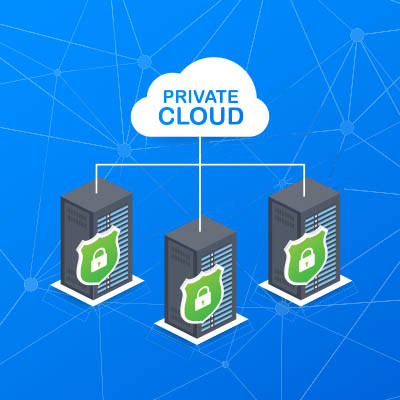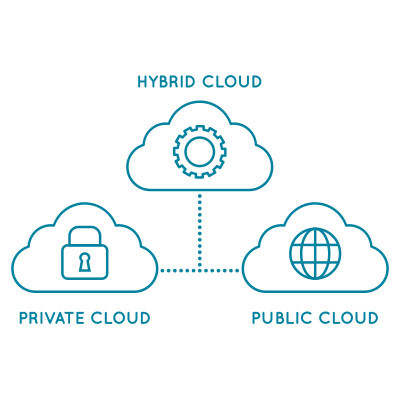Think about the apps you use daily—Google Drive, Netflix, Spotify, even Instagram. All of these run on cloud-based services, which basically means they store and process everything online instead of relying on one physical device. Businesses, big and small, are making the same shift because, honestly, it just makes sense. Let’s take a look at why you should be looking to use cloud services in your business.
Datalyst Blog
The holidays and the new year are perfect times to reflect on how you can make your team’s jobs easier and more efficient. One way you can do so is by opening up the option for remote or hybrid work, provided their roles can be removed from the office, either part time or full time. Today, we want to highlight some of the tools that a remote workforce needs to be successful—as well as how you can get them.
Cloud computing as a whole has been one of the most transformative technologies for businesses. With so many companies (upward of 90 percent of modern businesses) using some type of cloud computing, more companies than ever are really leaning into the technology and use it for mission critical business processes. Let’s take a look at some of the ways businesses can secure their cloud resources.
Small businesses today are in a prime position to thrive, thanks to a surge in innovative technologies that are affordable and work to boost efficiency. In the past, access to cutting-edge technology was often reserved for large corporations, but today small businesses can now gain quick access to these technologies and can have a real positive effect on the way they go about doing business. Let’s take a look at some of the best technologies small businesses can use to try and compete with the big boys.
Cloud computing has become a common tool, especially Software-as-a-Service (SaaS). Hosted software provides robust options that make sense to all companies, including anytime-anywhere availability, scalability, and provider management of the underlying hardware. In today’s blog, we want to discuss a couple of tips people can use when working with cloud computing.
Other than the innovative jump from tape, data backup hasn’t seen too many great leaps forward, so to speak. Sure, businesses don’t have to worry about resource-intensive manual backups anymore, but the standard approach is so rock-solid that innovation isn’t necessarily needed at this point. Today, we are exploring the backup and disaster recovery process and how modern-day solutions have made an effective tool even better.
Many organizations have become reliant on cloud computing due to its cost efficiency and accessibility to computing resources. However, complications with data security often arise. One way to gain control and maintain accessibility is to use a private cloud. This article explores why a business might choose a private cloud over more affordable public cloud platforms.
Doing business using the cloud is now commonplace, but every business is different and needs to fit its IT infrastructure to its operational requirements. This is possible, but trying to fit a one-size-fits-all solution into a complicated operational structure will cause more harm than good. In this month’s newsletter, we wanted to give five general tips to consider when you want to deploy the cloud in your business.
Everyone knows that a telephone system is a core component of a well-functioning business. Unfortunately, many businesses’ telephone systems haven’t advanced, but the way people do business has. If your business is paying a premium for its telephone system and isn’t getting the collaboration benefits needed to stay competitive, the answer might be VoIP.
Running a business has definite highs and lows. When things start spiraling seemingly out of control, it’s important to maintain the confidence that with the right decision-making and conscientious action, you can get through any problem that a business faces. In today’s blog, we’ll discuss some of the technology that can help you get through tough situations.
For competitive people, hearing the words “can’t win ‘em all” is infuriating. You want to win! These words, however, are completely true. Sometimes in business, you just lose. You may not be able to meet every deadline or win every sale, but there are things you can do to put your business in the best position to meet your goals. Today, we thought we would list a few things having the right technology strategy can do to help your business.
The cloud is a remarkable innovation that businesses of all industries and sizes can utilize to scale growth and operations. How you use the cloud, though, will change depending on your company's specific pain points and requirements. How can you invest in a cloud solution that ticks all your boxes? It starts with assessing whether you want to utilize a public, private, or hybrid cloud infrastructure.
With communication rising to the top of many businesses’ priorities list, it’s no wonder that Voice over Internet Protocol, or VoIP, is one of the most powerful ways to revitalize your company’s communications infrastructure. If you’re still using your old traditional telephony solution, buckle up because you’re about to find out how to ditch it for good.
There are rules for doing business that most people understand. That status quo has been around for a long, long time, but as technology advances, it does more than connect parts that weren’t connected before; it can break down some of the old notions about the ways businesses are run and give people who think outside the box a leg up going forward. Let’s look at three ways business leaders are innovating how they do business.
As conditions within your business change, it’s likely that your plans might need to change before their end results come to fruition. The decisions you made last fiscal year, or even last quarter, might no longer be relevant due to the rapid pace of evolution that happens with business technology. Let’s go over how you can get the appropriate technology solutions for your business without falling behind.
Cloud computing has undeniably become one of the most important tools a business can use. Most businesses use some form of cloud computing, with 4-of-5 using multiple SaaS applications, virtualized computing environments hosted in the cloud, or other cloud-based tools. Let’s take a look at some of the benefits of using cloud computing.
The cloud computing landscape has witnessed remarkable advancements, offering businesses and individuals a wide array of advanced cloud options. These cutting-edge technologies have revolutionized the way we store, access, and process data, empowering organizations to achieve unparalleled scalability, flexibility, and cost-efficiency. This week, we will delve into some of the most prominent advanced cloud options available today, highlighting their key features and benefits.
We have not been shy about expounding upon the benefits of the cloud for businesses, as these benefits are both considerable and accessible. That being said, not even the cloud is completely perfect, and there are security errors that can easily be made.
Let’s go through these security errors to see if any sound familiar to your situation.




















